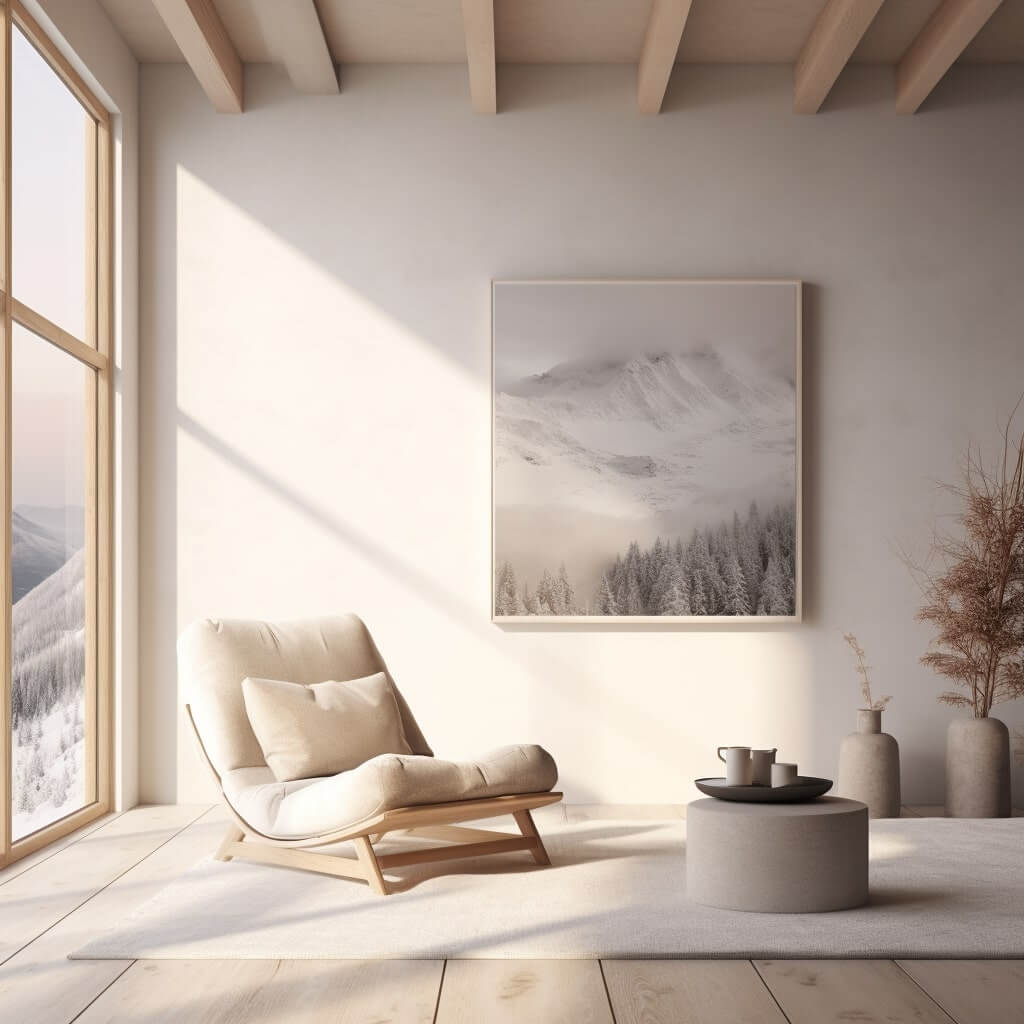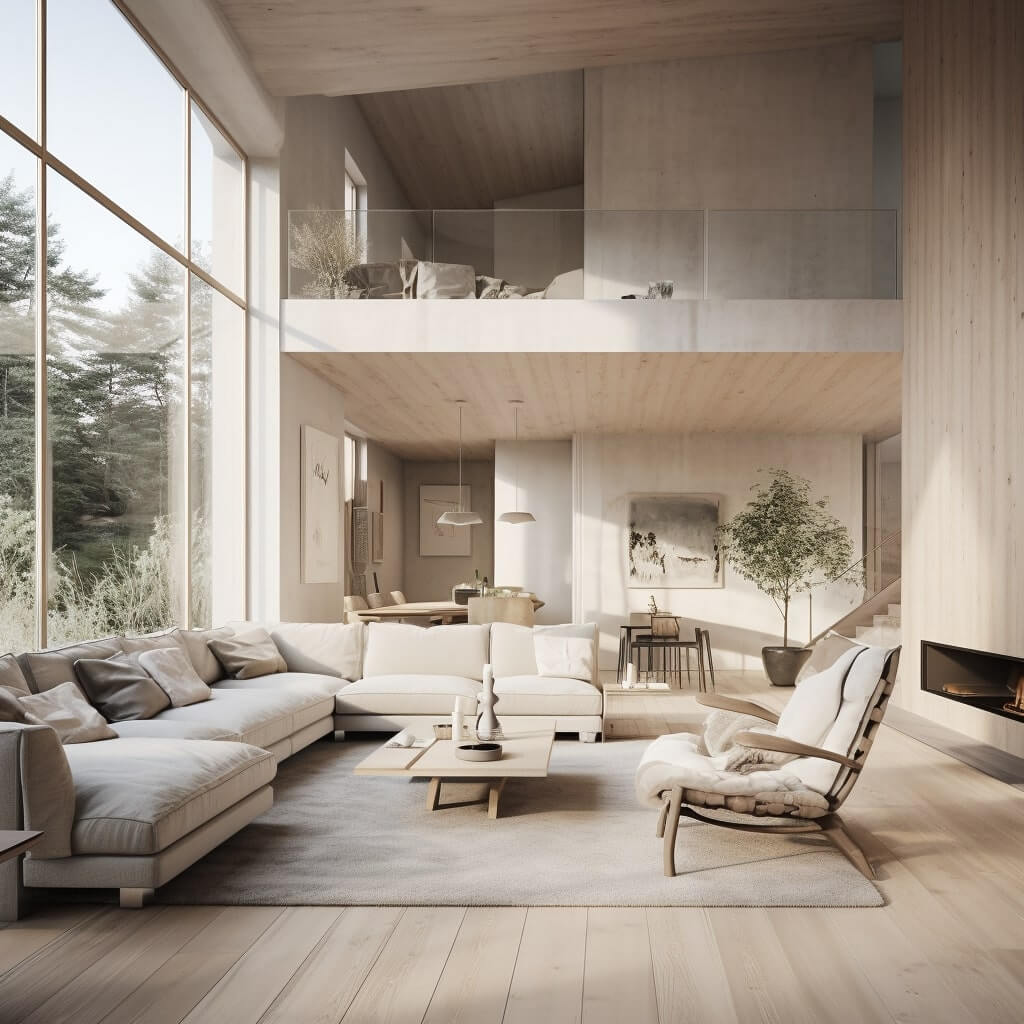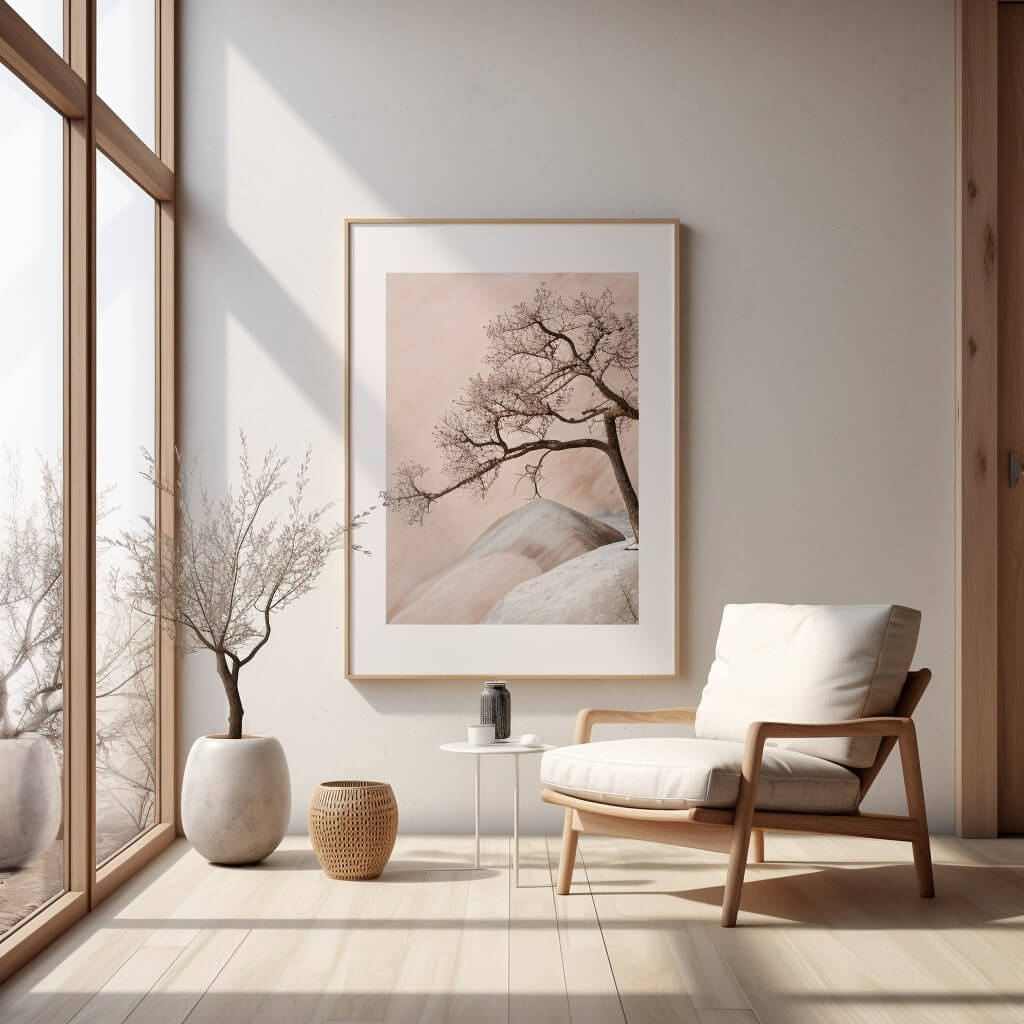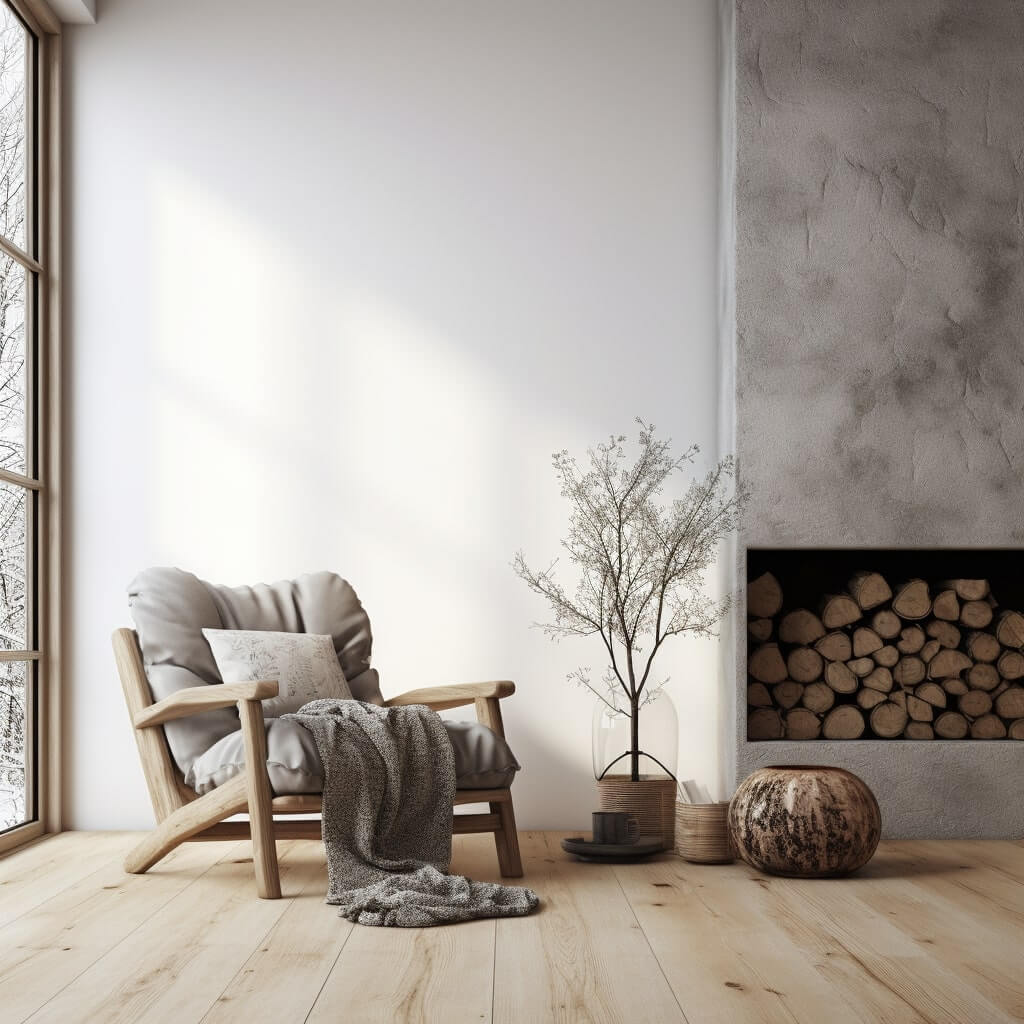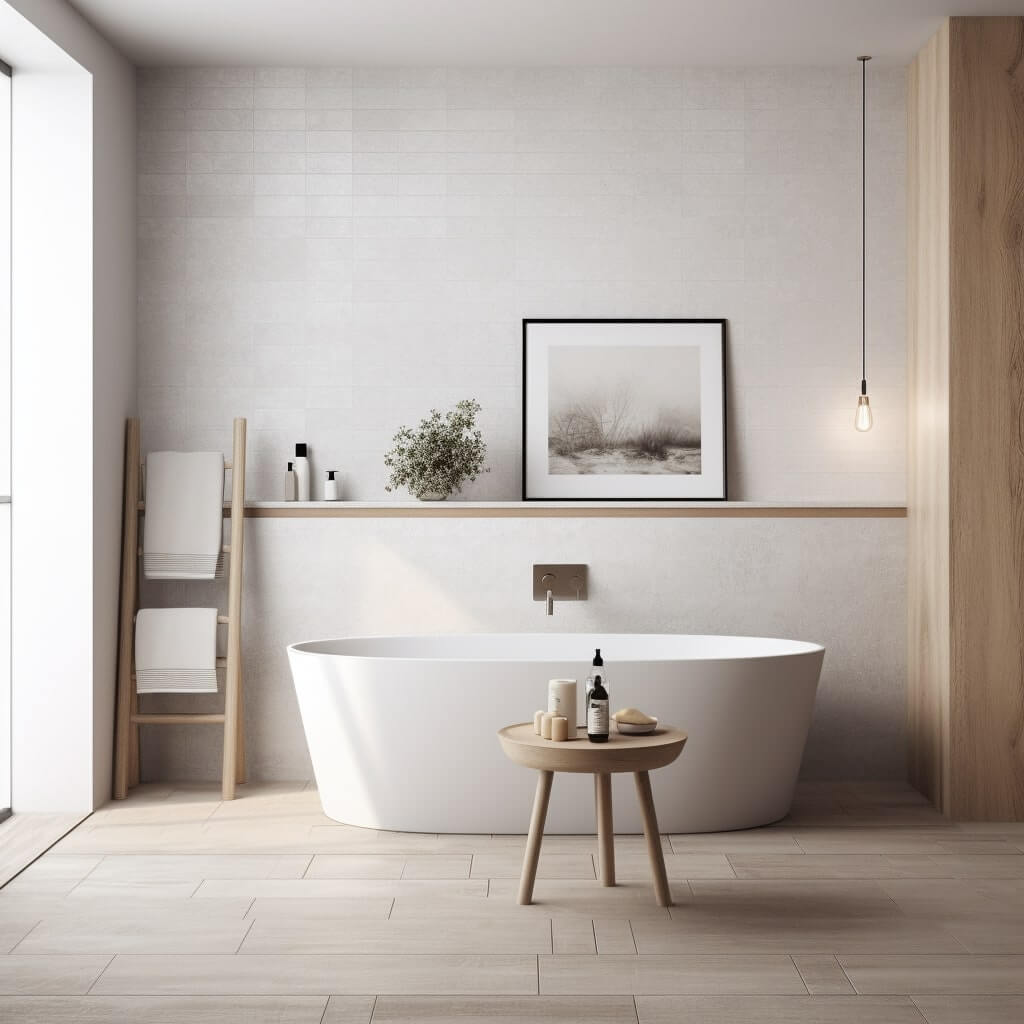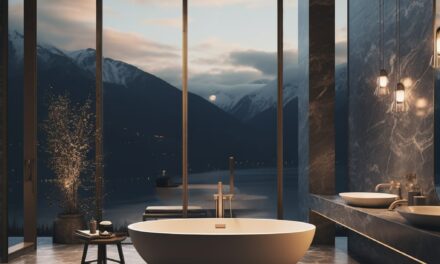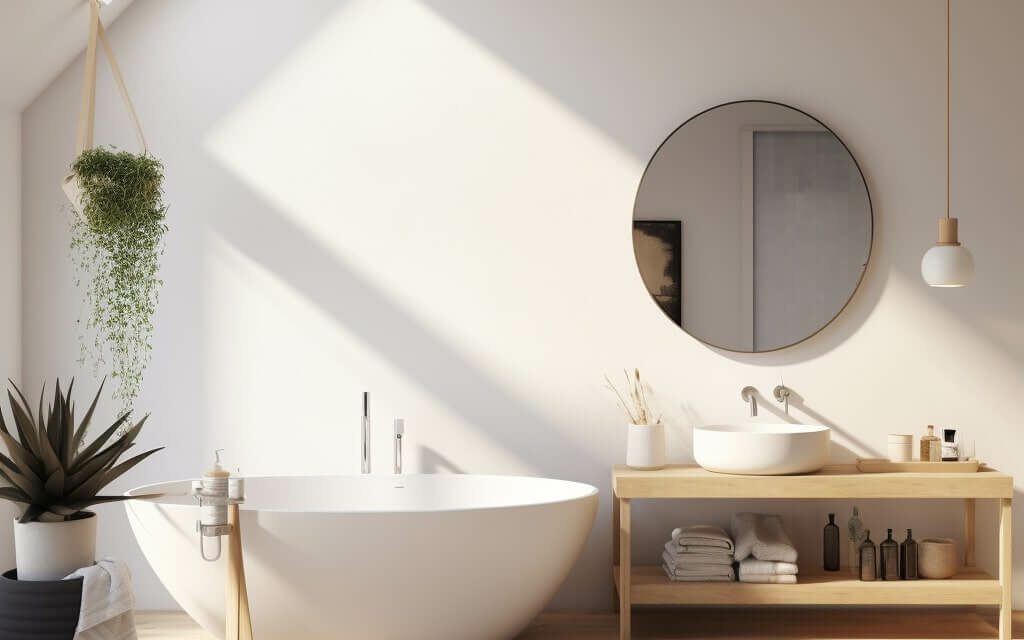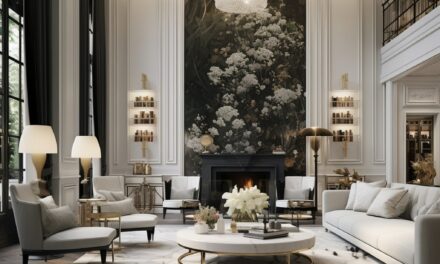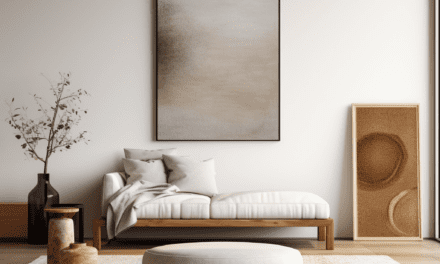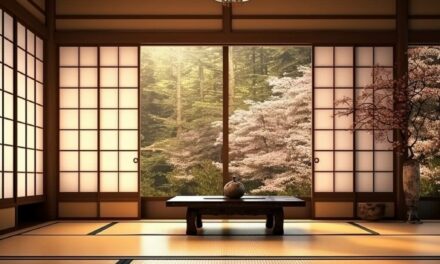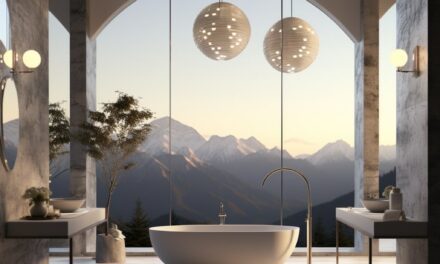Scandinavian design has become synonymous with minimalist design, functionality, and understated elegance.
As someone who appreciates good design and craftsmanship, I have long been an admirer of the Scandinavian design aesthetic – especially its part in my favourite design style: Japandi, which is a blend of Scandinavian and Japanese design styles.
On a recent trip to Denmark, Sweden, and Norway, I had the opportunity to immerse myself in the world of Scandinavian design.
From visiting design museums to shopping at boutiques to simply observing the architecture and interiors around me, it was a Scandinavian design lover’s dream.
In this blog post, I’ll share my perspective on what makes Scandinavian design so special and influential, origins and history of key design movements and styles, insights from Scandinavian designers, and examples of iconic designs and designers that have shaped the field.
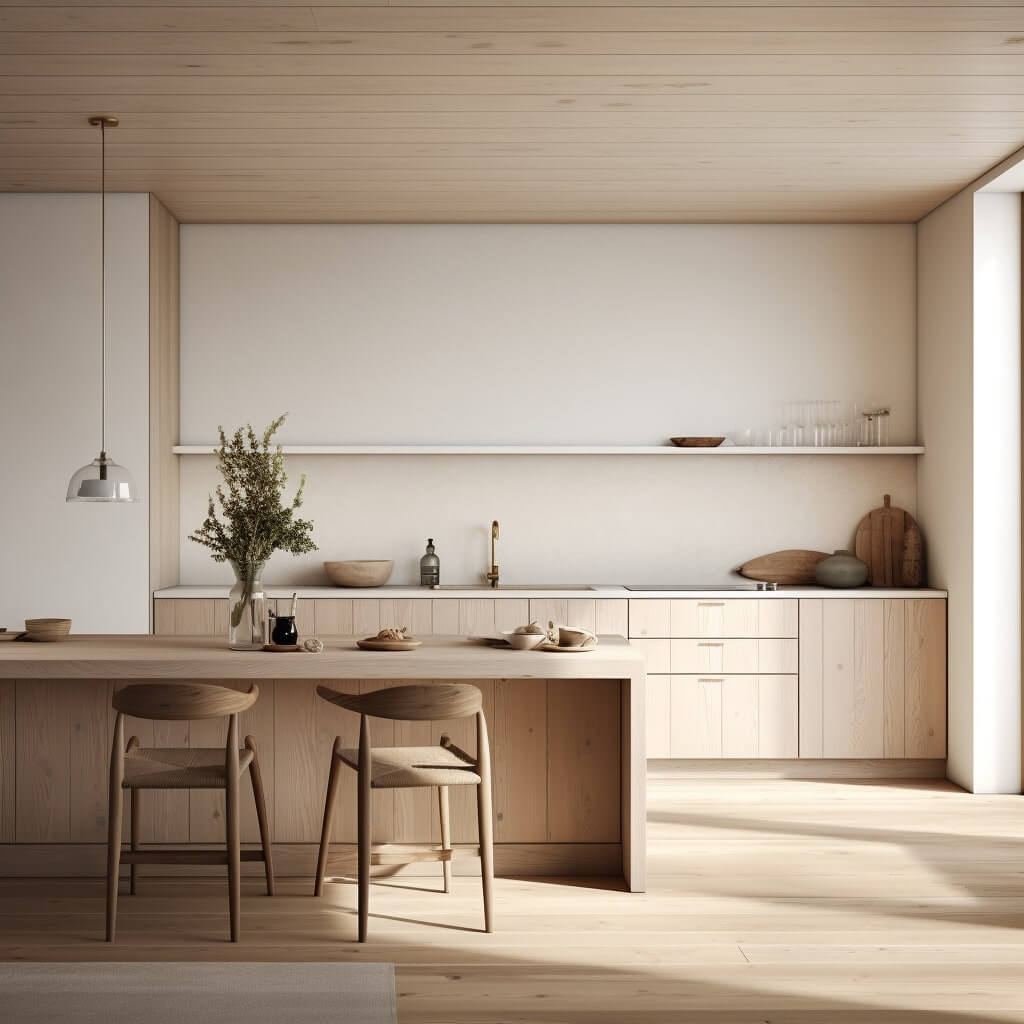
Characteristics of Scandinavian Design
Scandinavian design often exemplifies the Danish concept of “hygge” – a feeling of coziness, comfort, and contentment.
It focuses on simplicity, functionality, natural materials, and minimal ornamentation. Scandinavian interior design tends to utilize a neutral color palette of whites, grays, blacks and natural wood tones.
The Scandinavian style balances casual warmth through the use of natural textiles and textures with smoothly-finished cabinetry and furnishings.
Here are some of the key characteristics that define classic Scandinavian design:
- Minimalism – Less is more. Scandinavian design opts for clean lines, open spaces, and a sparse aesthetic. There is an emphasis on negative space and avoiding clutter.
- Practicality – Form follows function. Things are designed with purpose, usability, and longevity in mind over ornamentation. Materials and shapes are simple but thoughtful.
- Natural materials – Wood, cotton, wool, leather, and other organic materials feature prominently. These bring warmth and texture to otherwise minimalist designs.
- Neutral color palette – Whites, grays, and blacks provide a clean backdrop and let other elements shine. Pops of color come from accessories or nature.
- Quality craftsmanship – Attention to detail and construction is paramount. What is designed is carefully made to last.
- Connects indoors and outdoors – Large windows, light airy spaces, and natural finishing blur the lines between inside and outside.
- Sustainability – Scandinavian designs focus on sustainability via timeless function, durable materials and a less-is-more approach.
This aesthetic borrows aspects from both rustic farmhouse styles with an emphasis on natural materials and textures as well as modern and contemporary minimalism using clean lines and negative space. The overall effect is stylish yet livable, classic yet fresh.
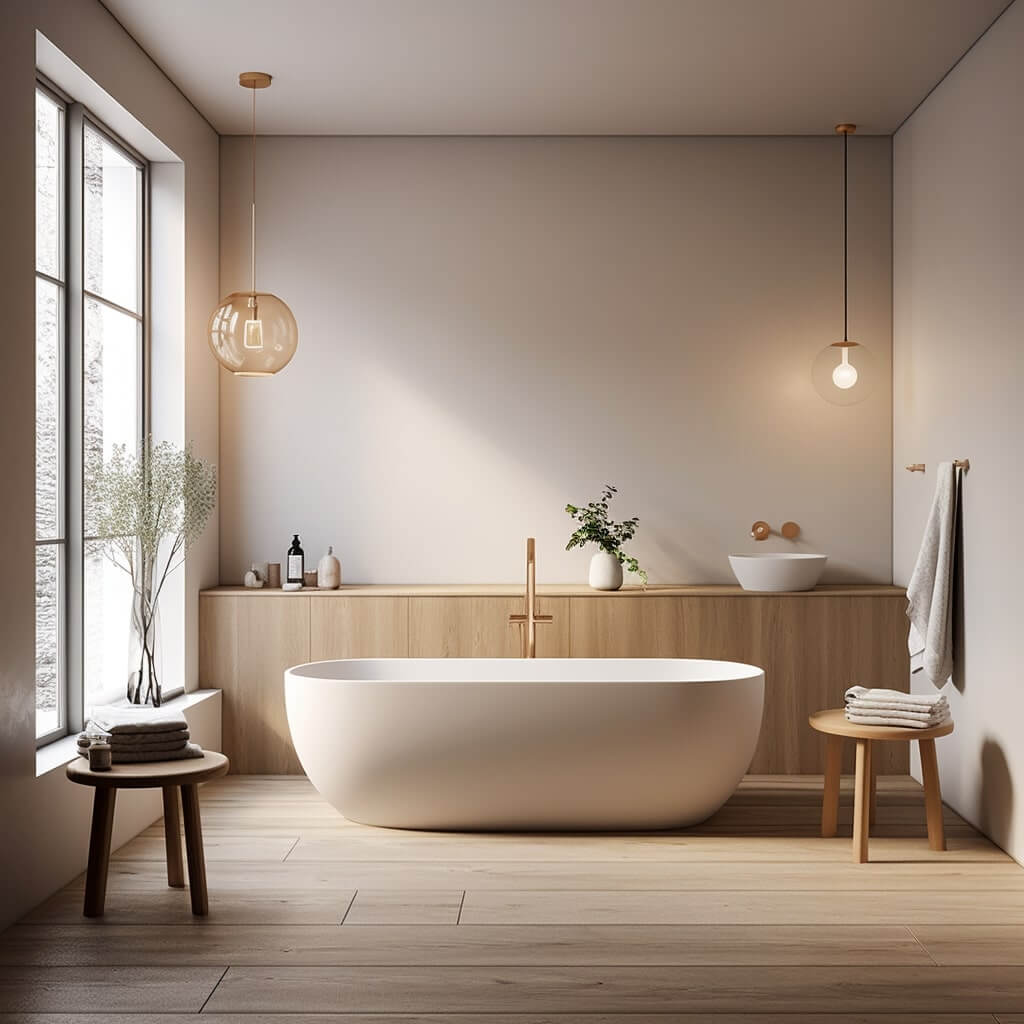
History of Scandinavian Design
Scandinavian design as we recognize it today emerged in the mid-20th century, but the roots extend back into traditional Nordic crafts and furnishings.
Here is a brief overview of how Scandinavian design developed over the past century:
- Traditional Nordic designs – The Arts and Crafts movement of the 19th/early 20th century revived interest in traditional folk arts, crafts and designs including rosemaling paintings. These featured natural imagery like flowers in subtle colors.
- Scandinavian Classicism – In the early 1900s, styles shifted to a pared-down neoclassicism. Furniture embraced ancient Greek and Roman proportions with tapered legs and minimal ornamentation. Light, birch wood was preferred.
- Nordic (Modern) Classicism – In the 1920s and 30s Nordic Classicism applied classic principles to modern furniture suited to smaller urban spaces. Furniture maker Kaare Klint was influential in this movement.
- Danish Modern – In the 1940s, Danish designers like Finn Juhl, Hans Wegner and Arne Jacobsen created furniture that was organic in form yet minimal and functional. Their designs were very influential across the world.
- Scandinavian Modern – In the 1950s and 60s a wider Scandinavian Modern movement emerged across furniture, textiles and architecture. Designs embraced simplicity, functionality and social consciousness.
- Scandinavian Retro – Mid-century modern Scandinavian styles saw a resurgence in the 1990s as Retro. IKEA helped popularize this return to natural materials, clean lines and vintage-mod styles.
While Scandinavian design continues to evolve today, mid-century modern forms perhaps best encapsulate the Scandinavian design ethos that has captured the world’s attention.
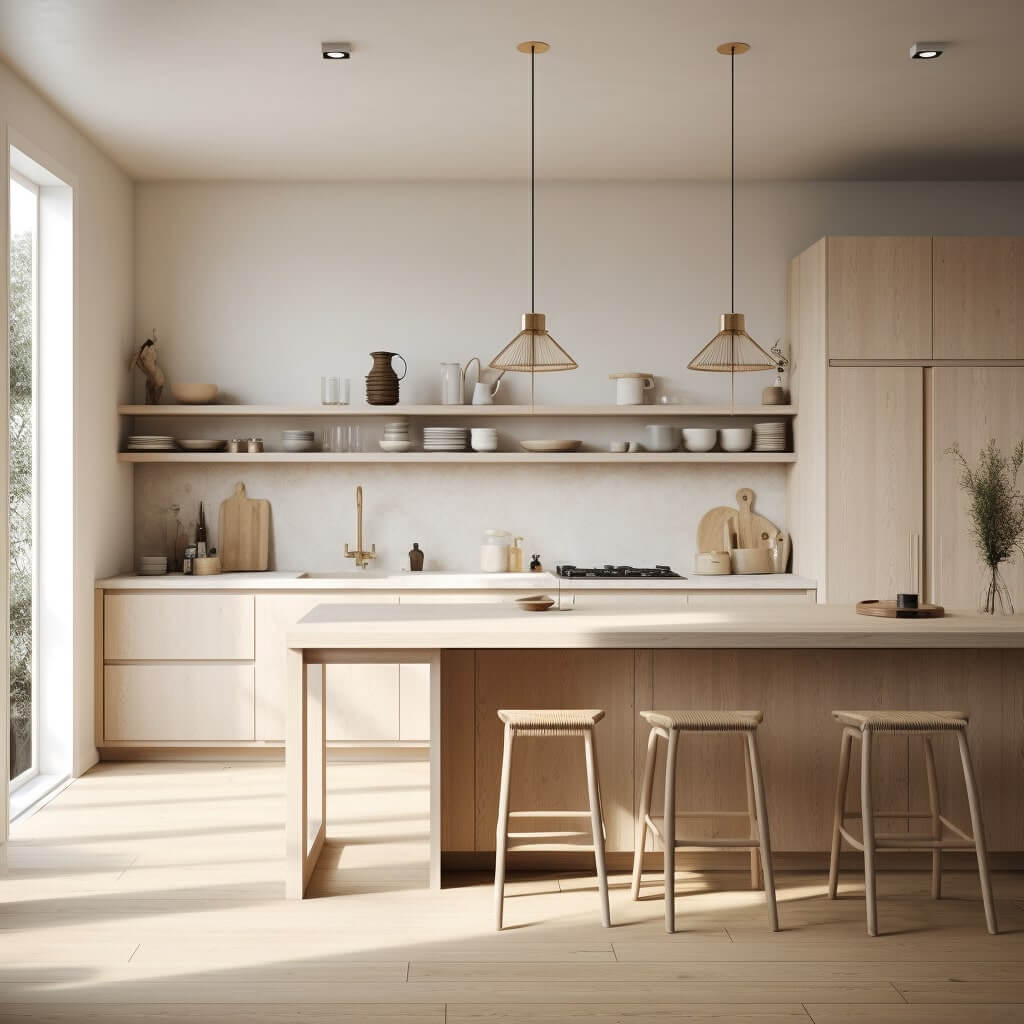
Iconic Scandinavian Designs & Designers
Scandinavian countries have produced countless iconic furniture and interior designs over the last century.
Here are some of the most recognizable and influential works that have defined Scandinavian design:
Arne Jacobsen
- The Ant Chair – Jacobsen’s three-legged Ant Chair with its tapered legs is unmistakable in its silhouette. First designed in 1952, it’s been in continuous production ever since.
- The Swan Chair – Jacobsen’s 1958 Swan Chair was inspired by the curved neck of the swan. This fluid molded synthetic chair became a hallmark of Danish modernism.
- The Egg Chair – Jacobsen’s Egg Chair encapsulated the space age, with its curved, egg-like form balancing on a pedestal. Despite its futuristic style, it has endured over decades as an iconic chair.
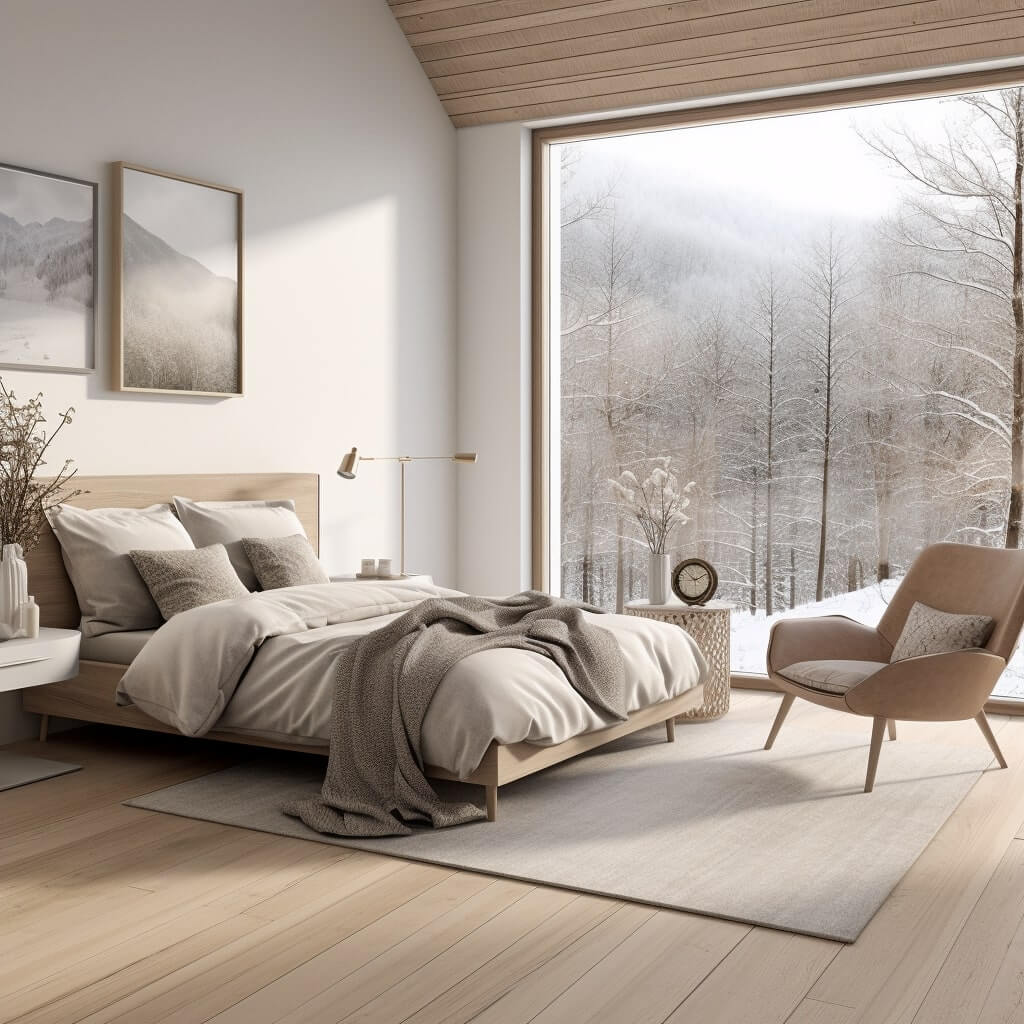
Hans Wegner
- The Wishbone Chair – This distinctive chair with steam-bent wood creating a graceful ‘Y’ backrest put Wegner on the map in 1949 and became a popular mid-century modern piece.
- The Shell Chair – Wegner’s Shell Chair from 1963 features a molded seat and back that completely envelope the sitter. It demonstrates both comfort and minimalism.
- The Peacock Chair – The split-back Peacock Chair from 1947 showcases Wegner’s explorations combining artistry and functionality within a clean organic form.
Alvar Aalto
- The Stool 60 – Aalto’s simple, architectural 3-legged Stool 60 design of 1933 features bent laminated birch. It was innovative both aesthetically and in its manufacturing process.
- The Paimio Chair – This seat’s cantilevered form and molded plywood perfectly married ergonomic design and functionality when created for the Paimio Sanatorium in 1931.
- The Savoy Vase – Aalto’s 1936 vase for Finnish glassware brand Iittala was a radical departure from classical form with its iconic, irregular shape.
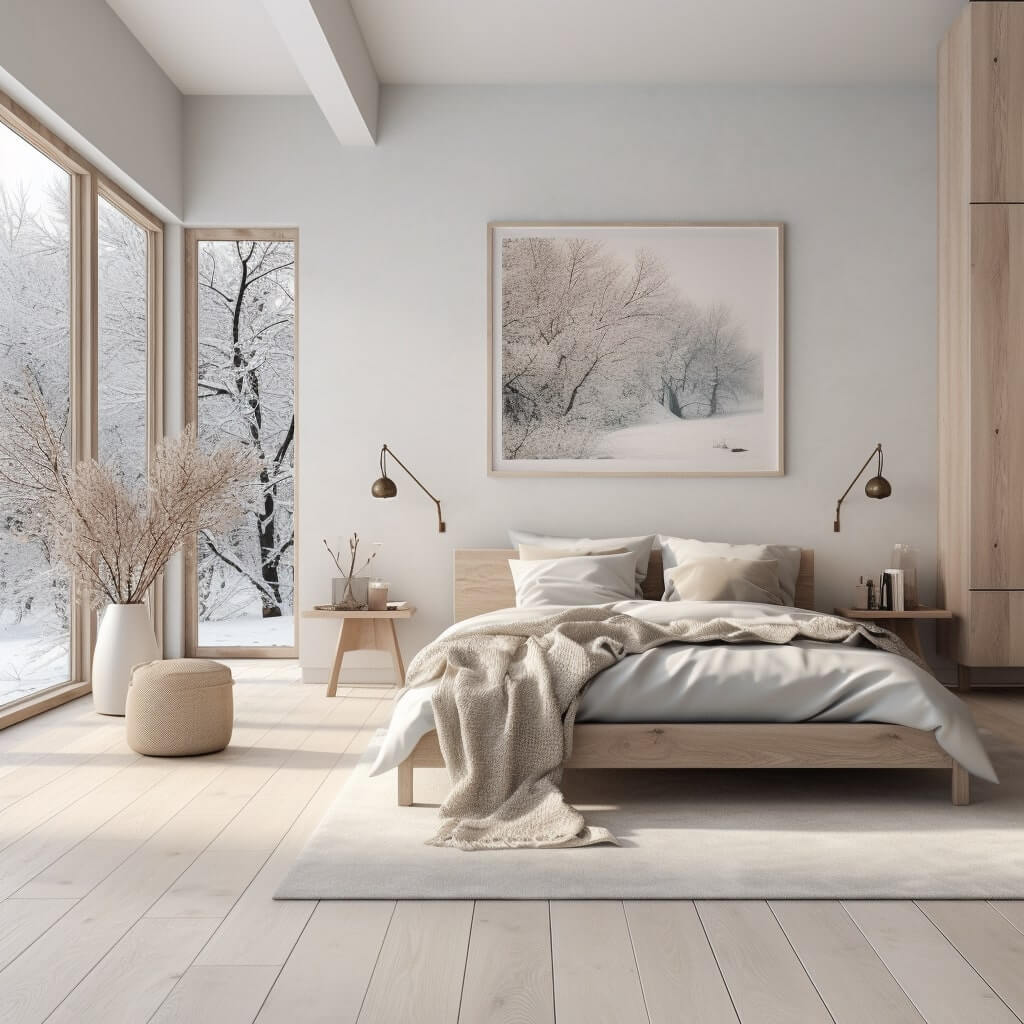
IKEA
While not a designer, IKEA has played a huge role in making Scandinavian design accessible and affordable for the mass market. Key contributions include:
- Popularizing flat-pack, ready-to-assemble furniture that’s efficient to transport, store and assemble.
- Using cost-effective materials like particle board and pine while maintaining aesthetics.
- Making functional, contemporary home furnishing available at low price points.
- Adapting traditional Scandinavian and mid-century modern designs into uncomplicated, minimalist pieces.
From the bent-plywood works of Aalto to Jacobsen’s sculptural seats to IKEA’s ubiquitous, practical pieces, Scandinavian designers have crafted furniture and spaces that have fundamentally shaped how we live and furnish our homes. Their pioneering mid-century designs created a timeless, democratic aesthetic that continues influencing designers worldwide today.
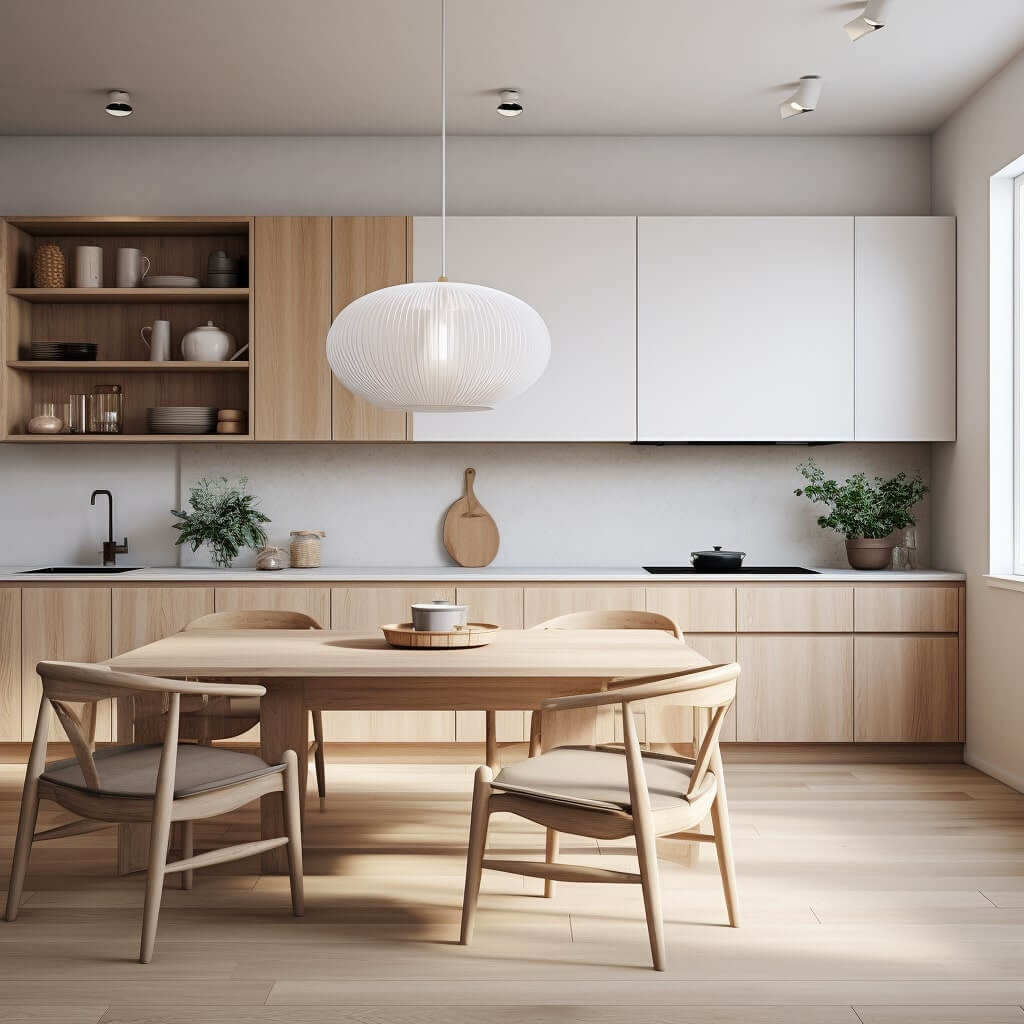
The Appeal of Scandinavian Design
It’s easy to see why Scandinavian design has come to be so admired and replicated globally. The Scandinavian style manages to be aesthetically pleasing yet highly livable.
It melds simplicity, functionality, craftsmanship and creativity into spaces we want to inhabit. Here’s a closer look at factors driving its appeal:
- Simplicity – Clean lines, negative space and lack of clutter offer respite from visual noise. Paired-down forms feel both serene and elegant.
- Practicality – Emphasis on ergonomics, utility and longevity satisfies our functional needs. Everything serves a purpose.
- Natural Materials – Natural fibers and finishes add coziness and texture while connecting to nature. They feel warm and inviting.
- Restrained Color Palette – Neutrals create an adaptable backdrop that provides calm and brightness. Pops of color can showcase accent pieces.
- Lighting – Large windows, glass doors and skylights usher in natural light. Paired with clean walls and surfaces, interiors feel open and airy.
- Connection to Outdoors – Indoor-outdoor flow allows the outdoors in. Materials reference nature for a closer connection.
- Craftsmanship – High quality construction and attention to detail are evident. Things are built with care by human hands to provide lasting value.
The Scandinavian design style manages to check boxes across both aesthetic appeal and lifestyle liveability, making it a perennially popular choice.
It provides beauty through simplicity and restraint rather than ornamentation.
This elemental yet thoughtful approach to design and living spaces resonates across eras and cultures.
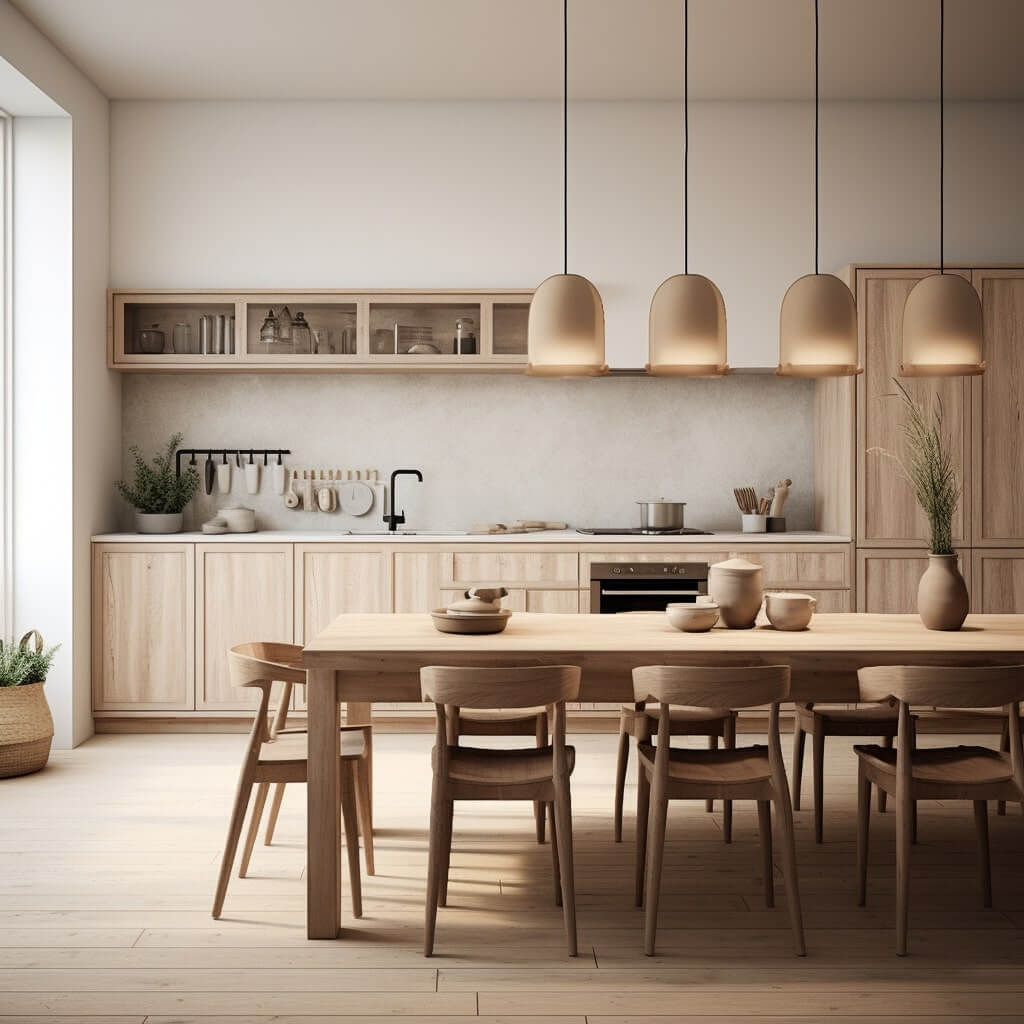
Scandinavian Design You Can Bring Home
If you find yourself drawn to the Scandinavian design aesthetic, there are many ways to weave it into your own home:
- Choose furniture with clean lines, light wood tones, and minimal ornamentation. Prioritize durability and functionality over trends.
- Paint walls white or neutral hues like gray, beige and taupe. This creates a calm, bright backdrop.
- Select natural fiber textiles and accessories in cotton, wool, jute, linen and leather. Layer in organic textures.
- Incorporate wood accents through floors, furniture and decor items like cutting boards and trays to add warmth.
- Source Scandinavian brands like HAY, Ferm Living, Marimekko, and Normann Copenhagen for authenticity. Or find budget finds at IKEA.
- Embrace negative space. Don’t overcrowd rooms. Edit down to just the essentials you need and love.
- Maximize natural light with floor to ceiling windows, glass doors, and skylights if possible. Supplement with lots of candles.
- Connect indoor and outdoor areas via glass doors, porches, patios and transitional furniture to blur boundaries.
- Incorporate greenery and floral accents to enliven neutral spaces. A few simple plants, flowers or branches can make a big impact.
The Scandinavian design principles of simplicity, functionality, natural materials and quality craftsmanship provide guidance you can adapt to your own space and lifestyle anywhere.
While I was inspired by experiencing Scandinavian design in situ, it’s easy to bring elements of this beautiful, livable aesthetic into any home.
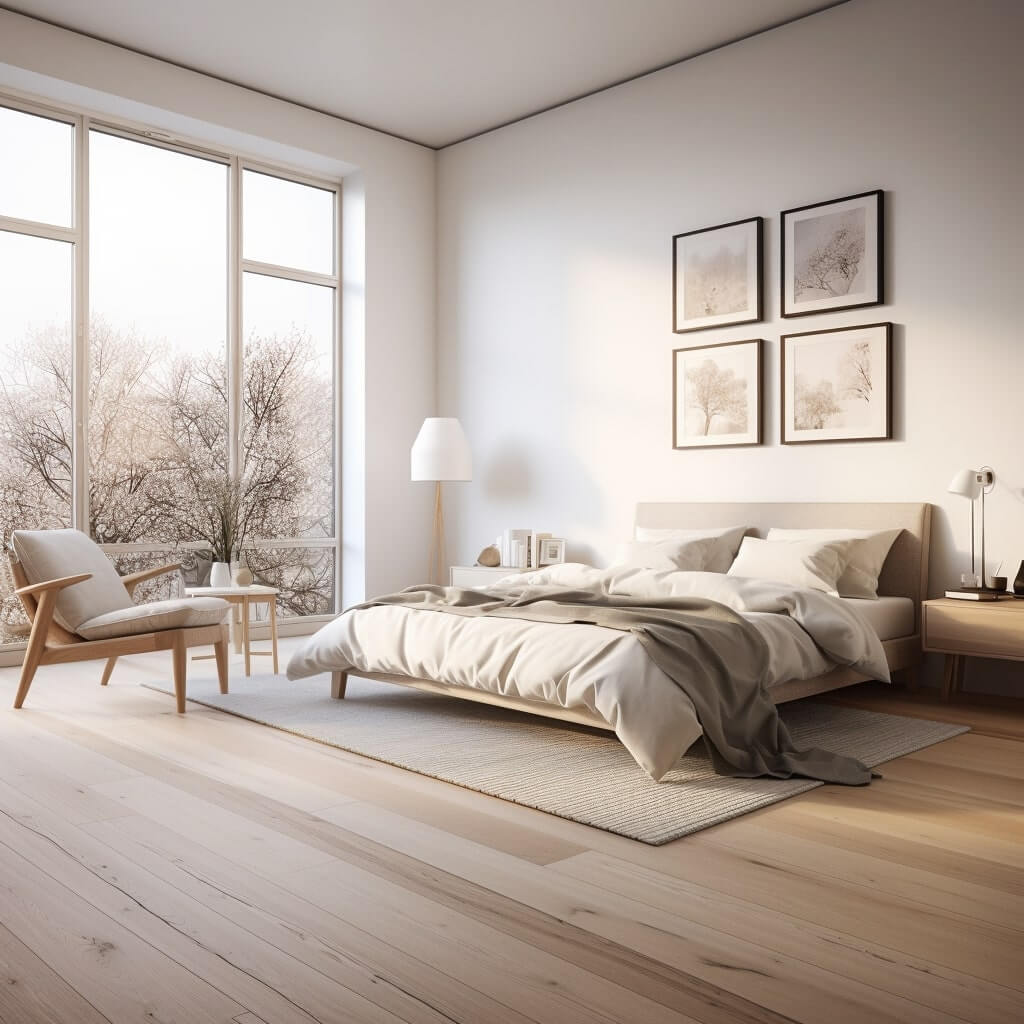
Why I Appreciate Scandinavian Design
As a designer, minimalism advocate, and nature lover, it’s easy to see why I’m drawn to the Scandinavian design ethos.
I appreciate the way Scandinavian design distills things down to clean, essence-driven elements.
It focuses on honoring materials, function, and craftsmanship over trends. Scandinavian spaces feel serene yet welcoming by emphasizing light, views, and connection to the outdoors.
The Scandinavian respect for negative space provides room to think and breathe. While I don’t adhere to a strict, monochromatic Scandinavian look, the principles influence my design sensibilities.
Above all, Scandinavian design’s balance of the sleek and the organic provides livable lessons we can all learn from in creating calmer, more inspired, and design-driven homes.
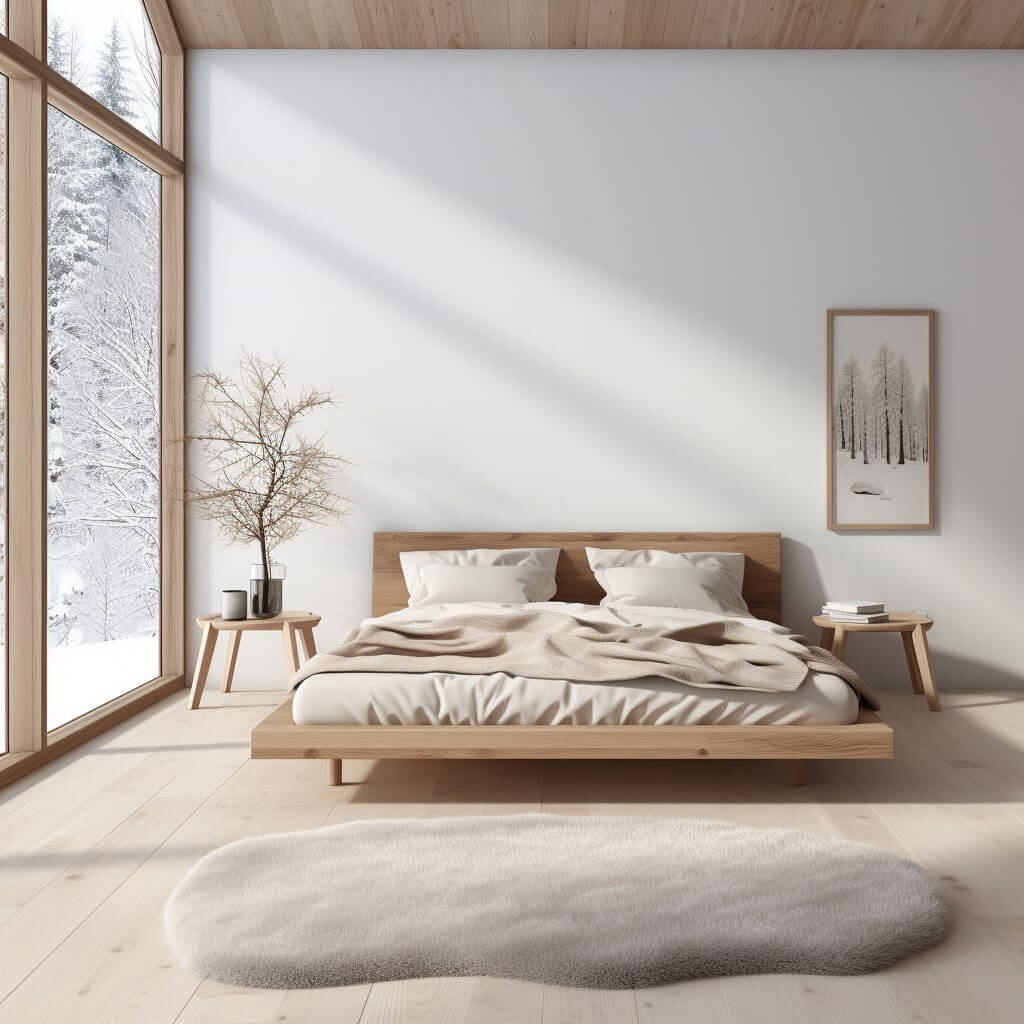
The Influence of Scandinavian Design on Japandi Design
As an interior designer, I’ve noticed Scandinavian style making waves across Japan in recent years and impacting the Japandi design aesthetic.
The Japanese have really taken to the clean lines, minimalist aesthetics, and functionality of Scandi design.
As someone fascinated by interior trends, I think this creative fusion between Nordic principles and Japanese design is fascinating.
Gone are the days of crowded, ornate interiors here. Instead, that less-is-more Scandi vibe offers respite from visual chaos.
Walking into Japandi homes and stores today, I’m struck by the calm, uncluttered spaces.
Neutral palettes, light woods, and negative space give an airy, relaxed feel.
It’s a soothing antidote to Japan’s normally packed urban lifestyle.
While paying homage to Scandinavian influences, Japandi designers also put their own spin on things.
They combine materials like Japanese washi paper with Danish mid-century shapes for a hybrid look. The Scandi-Japanese fusion has been one of the most exciting new directions I’ve witnessed in my career. It’s been so cool seeing how global connections translate locally for designers here.
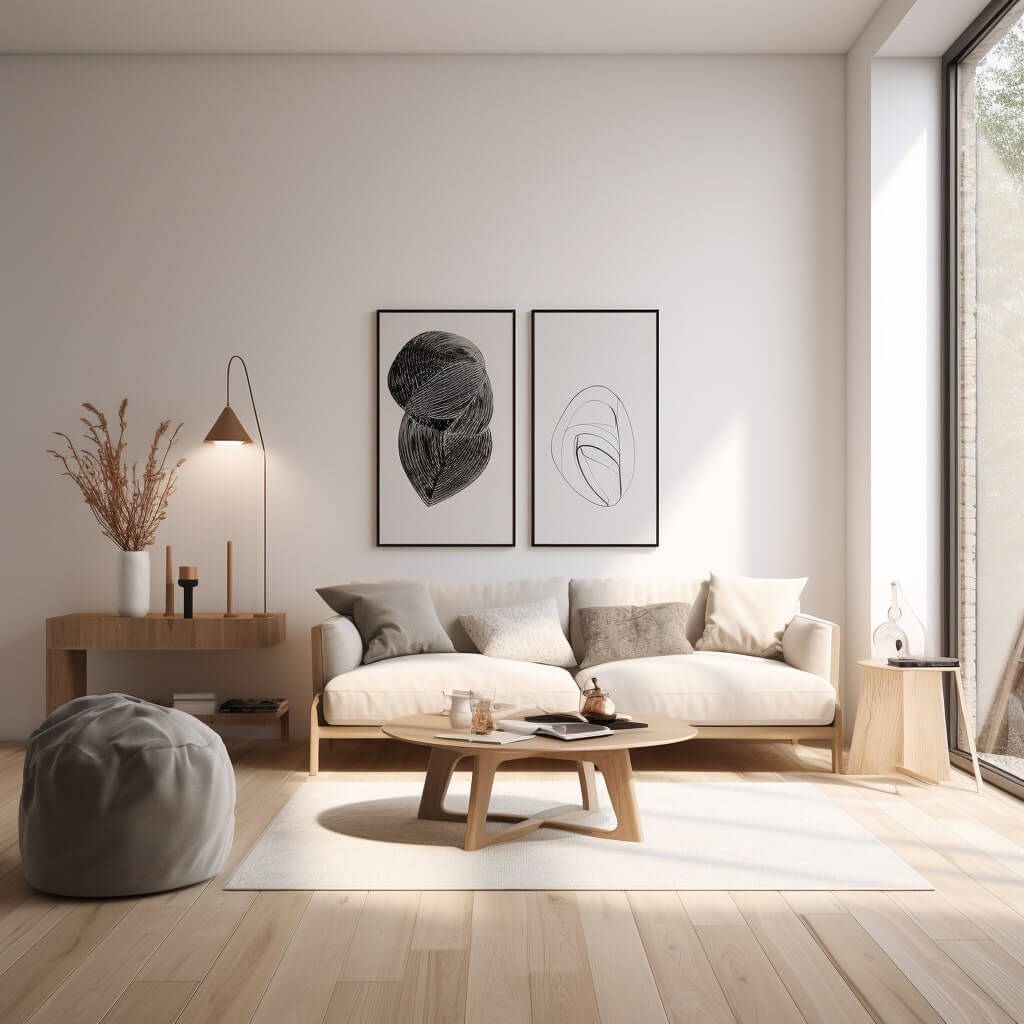
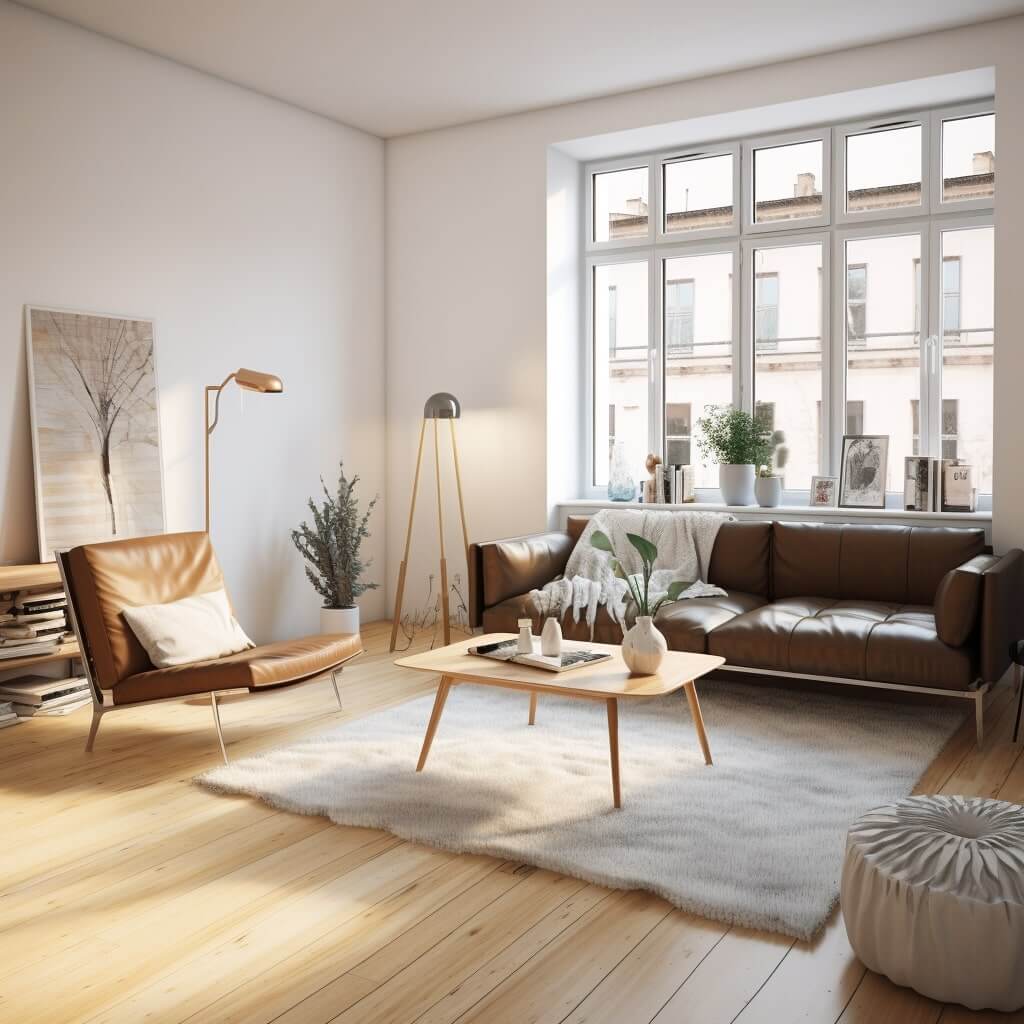
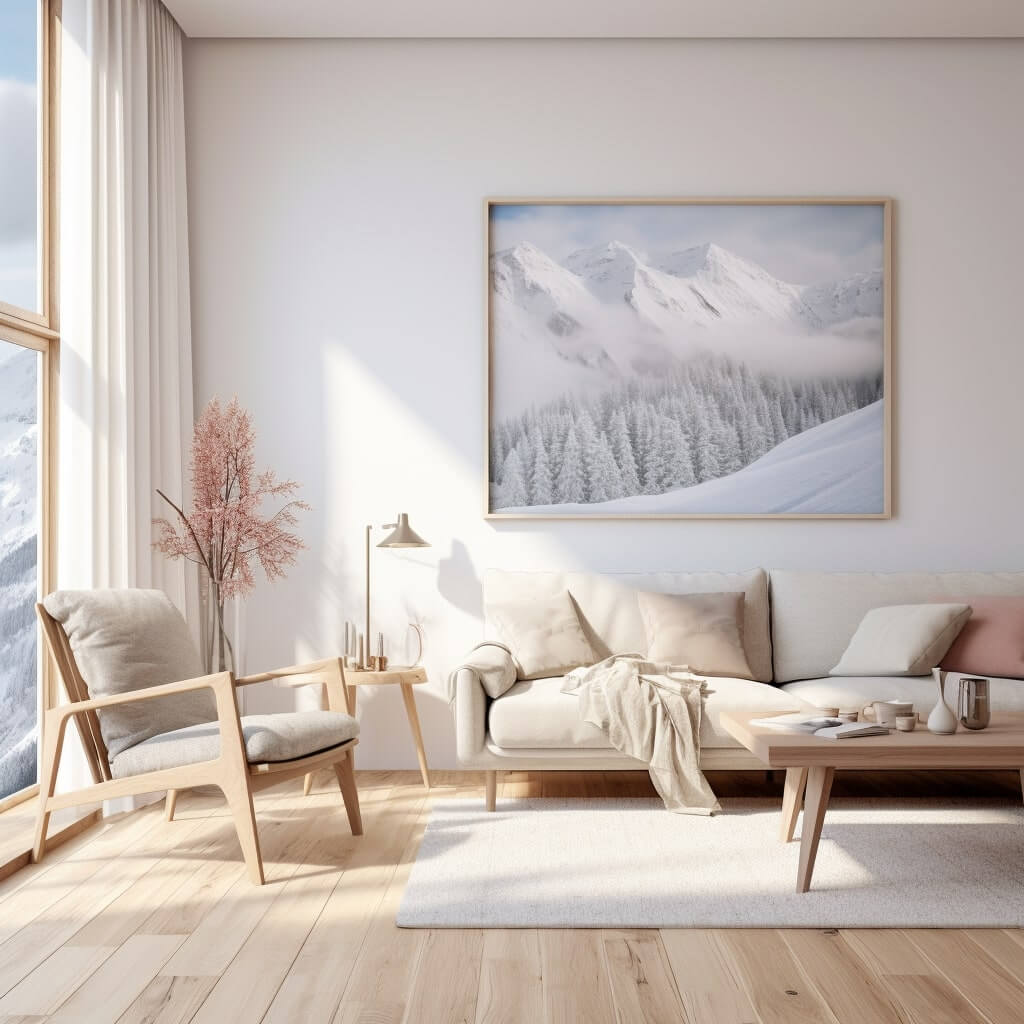
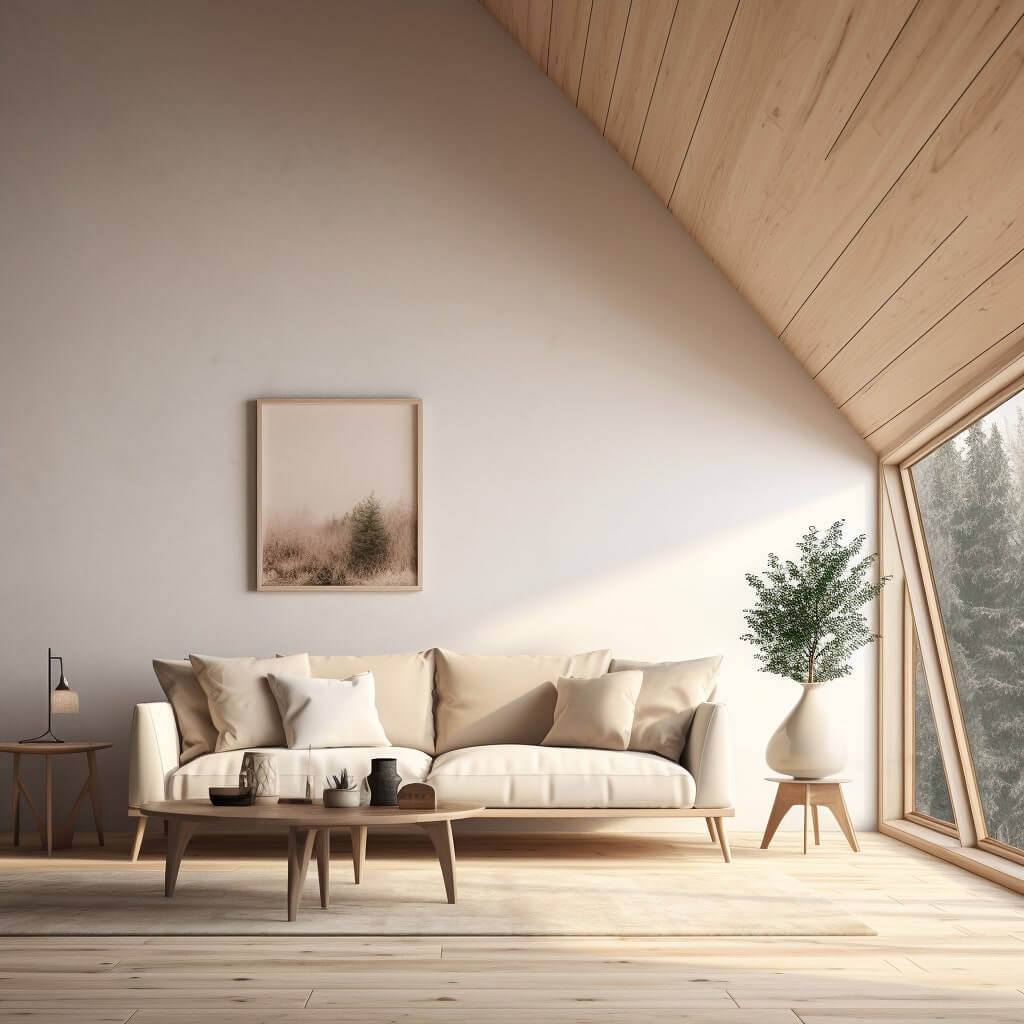
FAQs
What is Scandinavian interior design?
Scandinavian design originates from Nordic countries, emphasizing simplicity, minimalism, functionality, and a connection to nature.
What color palettes are typically used in Scandinavian design?
Light and neutral colors dominate, such as white, gray, beige, and pastels, occasionally contrasted by brighter accents.
What materials are commonly used in Scandinavian interior design?
Natural materials like wood, leather, wool, metal, and glass, with a heavy focus on sustainability and nature.
What types of furniture are used in Scandinavian interior design?
Furniture in Scandinavian design features clean lines, organic shapes, and practicality, often a blend of traditional and modern styles.
How can I incorporate Scandinavian interior design into my home?
Embrace simplicity and function, use natural materials and light colors, and prioritize natural light and understated accessories.
What is the concept for Scandinavian design?
The Scandinavian design concept emphasizes minimalism, functionality, and a strong connection to nature, prioritizing simple, clean lines and light, muted colors.
What are the elements of Scandinavian design?
Key elements include minimalist aesthetics, functional design, natural materials (especially wood), light colors, natural light, clean lines, and understated accessories.
What are the rules of Scandi?
Scandi rules focus on minimalism, functionality, comfort, and light. Spaces should be clutter-free, colors muted, furniture practical, and natural light maximized.
Why is Scandinavian design so minimalist?
Scandinavian minimalism reflects the Nordic ethos of simplicity, practicality, and respect for natural and human resources, all set against long, harsh winters.
What is the difference between Nordic and Scandinavian style?
“Nordic” is a broader term encompassing design from all Nordic countries, including Finland and Iceland. “Scandinavian” often refers specifically to Sweden, Denmark, and Norway.
What is the difference between Danish and Scandinavian design?
Danish design is a subset of Scandinavian design, characterized by a more playful approach, warmer textures, and a higher degree of craftsmanship.
What is Nordic vs Bohemian?
Nordic design is minimalist and functional with muted colors, while Bohemian style is eclectic, vibrant, and layered, with diverse patterns and textures.
What is Scandinavian style house?
A Scandinavian style house typically features minimalist design, light-colored interiors, functional layout, natural materials like wood, and large windows to maximize light.
